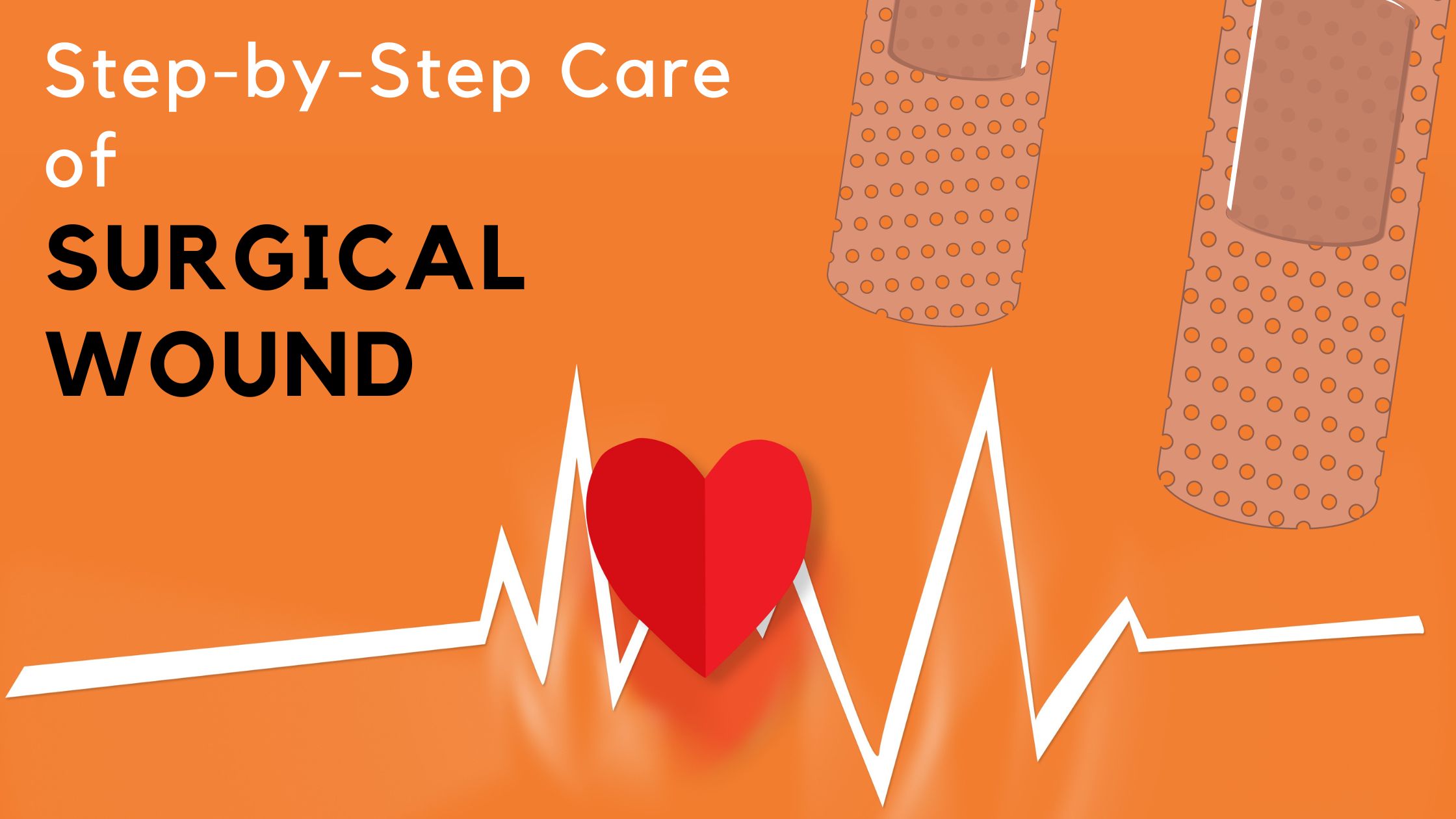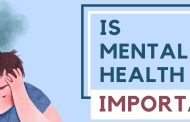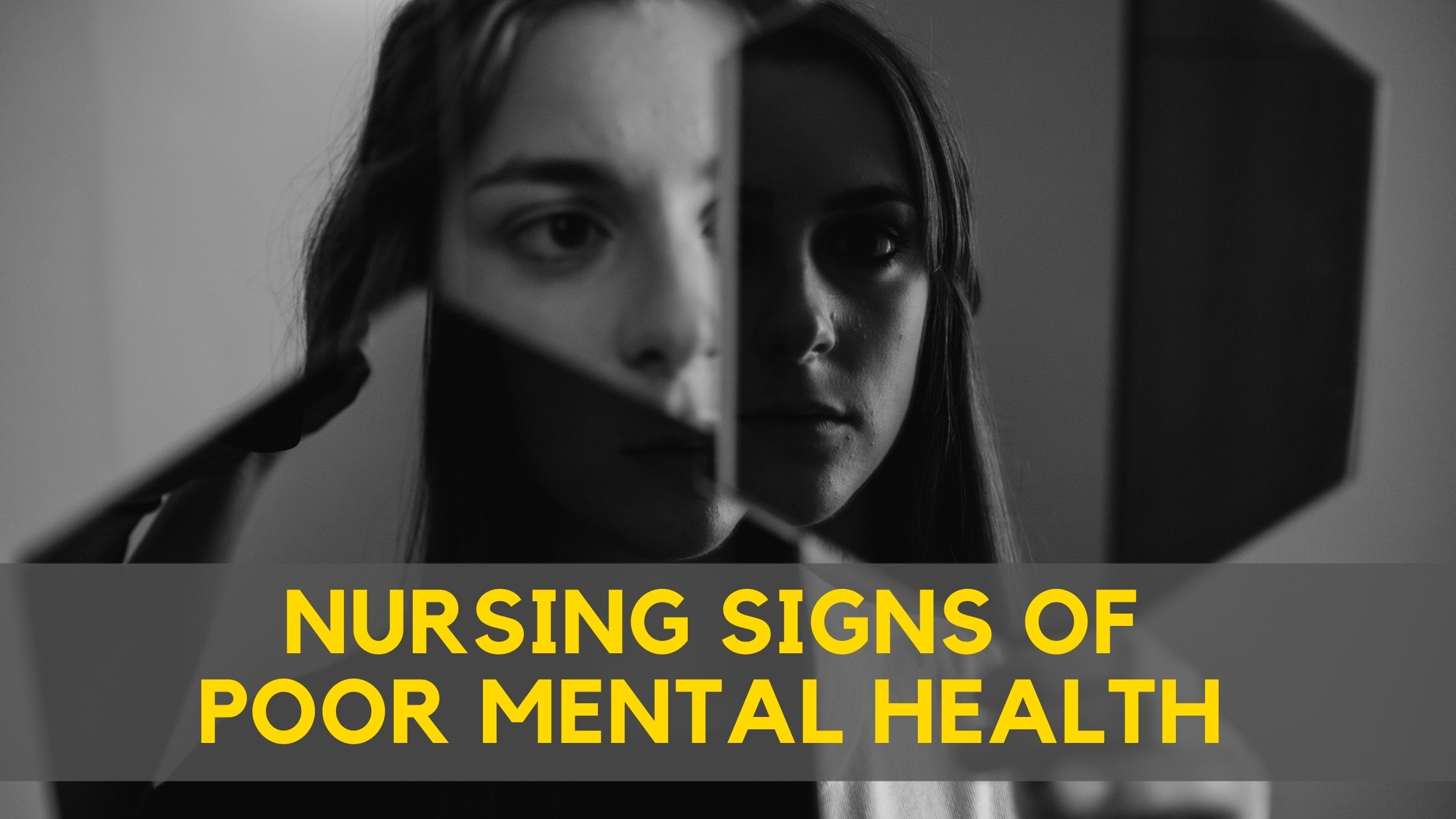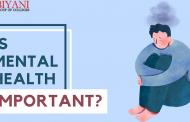Introduction:
Neonatal jaundice is one of the most common clinical conditions encountered in child health nursing and affects approximately 60% of term infants and 80% of preterm infants.
It is characterized by a yellowish discoloration of the skin and sclera caused by elevated serum bilirubin levels, commonly referred to as hyperbilirubinemia.
Effective nursing management is a cornerstone of neonatal care and plays a vital role in preventing serious complications such as kernicterus, which can result in permanent brain damage.
This responsibility requires nurses to actively initiate, maintain, and monitor the infant’s clinical progress through skilled assessment and timely interventions.
or aspiring nursing professionals who wish to build a strong foundation in neonatal and pediatric care, choosing the right educational institution is equally important. Enrolling in a reputed nursing college in Jaipur, such as Biyani Nursing College, can provide students with quality academic training, clinical exposure, and professional mentorship to excel in child health nursing.
This blog presents a goal-directed approach to help nursing students build trusting relationships with families while delivering high-quality neonatal care.
Defining Neonatal Jaundice
Neonatal jaundice is a patient-centered clinical manifestation in which the newborn’s liver is unable to process bilirubin at the rate it is produced.
It is more than a visual observation; it represents a professional process of assessment and data collection.
Although often physiological in origin, neonatal jaundice is patient-specific and requires nurses to promote healing and growth through evidence-based practice.
Mastery of neonatal jaundice management remains a fundamental clinical skill for pediatric nurses to ensure patient safety and optimal outcomes.
Types of Neonatal Jaundice
a) Physiological Jaundice
This is the most common type and typically appears after 24 hours of life.
- Caused by liver immaturity and increased breakdown of fetal red blood cells.
- Usually peaks between the 3rd and 5th day of life.
- Gradually subsides as liver function matures.
b) Pathological Jaundice
This form is considered a medical emergency in nursing practice.
- Appears within the first 24 hours or persists beyond two weeks.
- May result from Rh or ABO incompatibility, infection, sepsis, or metabolic disorders.
- Requires close monitoring as bilirubin levels can rise rapidly to dangerous levels.
c) Breastfeeding and Breast Milk Jaundice
Breastfeeding jaundice is usually related to suboptimal intake during the first week of life, leading to dehydration and reduced bilirubin excretion.
Breast milk jaundice typically appears between weeks 2 and 5 and is thought to be caused by substances in breast milk that interfere with bilirubin metabolism.
Key Components of Assessment
Physical Assessment
Nurses should inspect the infant in natural daylight whenever possible.Blanching the skin over bony prominences can help identify jaundice. A yellow discoloration appearing after pressure release indicates jaundice.Cephalocaudal progression should be noted, as yellowing that moves from the face toward the trunk and lower extremities reflects rising bilirubin levels.
Clinical Vigilance
Neurological Assessment: Monitor for drowsiness, irritability, high-pitched crying, or poor sucking reflex, which may indicate early bilirubin toxicity.Elimination Patterns: Record stool frequency and color. Black or seedy stools indicate effective bilirubin excretion.
Nursing Interventions
I. Phototherapy Management
- Maximizing Exposure: The infant should wear only a diaper to ensure maximum skin exposure.
- Eye Protection: Soft eye patches must be used to protect the retina and removed during feeding to promote bonding.
- Positioning: Reposition the infant every 2–3 hours to ensure uniform light exposure.
II. Nutritional and Hydration Support
- Frequent Feeding: Encourage feeding every 2–3 hours to promote bowel movements and bilirubin elimination.
- Daily Weights: Monitor weight daily to detect dehydration, particularly during phototherapy.
Barriers to Avoid (Non-Therapeutic Actions)
- False Reassurance: Avoid dismissive statements such as “It’s just a tan,” as they undermine parental concerns.
- Application of Lotions: Do not apply oils or lotions, as they may cause skin burns under phototherapy lights.
- Medical Jargon: Avoid complex terminology without explanation. Use clear, simple language.
Role of Nurses in Therapeutic Communication
I. Establishing Rapport and Trust:
Introduce yourself clearly, explain your role, and outline the treatment goals.Respect family privacy and handle the newborn with dignity and honesty.
II. Parental EducationExplain treatments such as phototherapy or biliblankets using simple language. Apply the teach-back method to confirm understanding.
III. Demonstrating Empathy and Support
Acknowledge parental emotions: “I can see you are worried; it can be frightening to see your baby under the lights.” Use supportive non-verbal communication, such as sitting at eye level during discussions.
IV. Documentation and Advocacy
Document the infant’s response to phototherapy, treatment duration, and parental concerns.Record parental statements in their own words when possible.Act as an advocate by promptly reporting any changes in skin color or neurological status to the physician.
Conclusion
Therapeutic nurse-patient relationships in neonatal care are built on effective communication and clinical competence.Managing neonatal jaundice is not merely a soft skill but a critical nursing responsibility that directly impacts newborn health.Future nurses must intentionally apply structured assessment techniques and compassionate communication to deliver holistic and family-centered care.
Blog By:
Mrs. Urvashi
Assistant Professor, Department of Nursing
Biyani Group Of Colleges
INTRODUCTION
Hey there, I hope you’re doing good. Do you know why ‘care of surgical wound’ is necessary? In this blog, you’ll read about the meaning as well as the care of surgical wounds. Likewise, you’ll also read about the purposes and important articles for caring the surgical wounds. So, keep reading till the end of the blog.
Let’s get started….
Meaning
A surgical wound, also known as an incision, is a wound that has been deliberately produced during a surgical procedure by a cutting instrument such as a scalpel in a sterile environment. Surgical wound care is a nursing intervention that is primarily focused on the prevention of wound complications and the promotion of surgical wound healing.
Moreover, Surgical wounds can be classified into one of four categories, according to guidelines set by the American College of Surgeons.
Class I: Generally, these are clean wounds. Hence, they show no signs of infection or inflammation. For example, exploratory laparotomy, mastectomy, neck dissection, and splenectomy.
Class II: These are clean-contaminated wounds. Although the wound may not show signs of infection, there is an increased risk of becoming infected primarily due to its location. For example, cholecystectomy, small bowel resection, Whipple, liver transplantation, and gastric surgery.
Class III: Basically, a surgical wound is that where an outside object has come in contact with the skin is having a high risk of infection and is considered a contaminated wound. For example, rectal surgery, and penetrating wounds.
Class IV: These are dirty-contaminated wounds and include wounds that have been exposed to fecal material, e.g. perforated bowel, and peritonitis.
PURPOSE OF CARING SURGICAL WOUND
- To remove visible debris and devitalized tissue.
- To apply compression for hemorrhage or venous stasis.
- To protect the wound and surrounding tissue.
- To remove excessive or drying exudates.
- To promote wound healing.
- To allow inspection and assessment of the contaminated wound.
ARTICLES USED FOR CARING SURGICAL WOUNDS
- Sterile artery forceps- 1
- Mackintosh with draw-sheet
- Sterile thumb forceps- 1
- A pair of sterile gloves
- A pair of clean gloves
- Sterile dressing pack (1-2)
- Kidney tray
- Sterile saline
- Antiseptic lotion (if indicated)
- Adhesive tape
- Appropriate receptacle to collect waste
- Sterile bowl
- Sterile scissors
- Face mask
- Topical medication (optional)
- Screen
- Hand rub

STEP-BY-STEP CARE OF SURGICAL WOUND
Preprocedural Steps
- Firstly, identify the patient.
- Secondly, explain the purpose of the procedure to the patient and family/caregivers and reassure them. It will lessen their anxiety and promote patients’ cooperation.
- Thirdly, gather all the articles on a sterile trolley and keep it accessible near the bedside. An organized approach will save time and energy.
- Wash hands thoroughly and wears a mask and gown (optional) to prevent infection.
- Check the physician’s order for wound dressing and any specific instructions to clarify the type of dressing to be performed.
- Screen the patient’s bed to provide privacy to the patient.
- Assist the patient to a comfortable position that provides easy access to the wound area. It will provide comfort to the patient as well as ease in performing wound dressing.
- Adjust the patient’s clothes according to the site of the wound while covering the rest of the body. It will permit easy access to the wound and will also maintain warmth and dignity.
Keep reading the steps for caring the surgical wounds
- Place mackintosh and drawsheet on the bed beneath the area of dressing to prevent soiling of the linen.
- After that, don’t clean his gloves. Furthermore, remove the soiled dressings carefully‚ pulling tape toward the suture line to prevent overstretching of the wound.
- However, if the dressing is adherent to the skin, moisten it by pouring a small amount of normal saline. The moistened dressing is easier to remove.
- Meanwhile, inspect dressing for amount, the color of the discharge, or the presence of any foul odor. It will help to assess the wound healing process.
- Assess the condition of the surgical wound for redness and discharge to look for the signs of infection.
- Discard soiled dressing and gloves directly into the appropriate receptacles to prevent the spread of microorganisms.
- Lastly, Assess the incision for signs of healing. Describe the appearance of the patient
KEYWORDS
- Always clean from least contaminated to most contaminated.
- Record date as well as the time of dressing done.
- Always use an aseptic approach while providing surgical wound care to minimize the risk of infection.
- Above all, Care should be performed in a way that minimizes trauma to the wound.
- Particularly, Antiseptics are not routinely recommended for cleansing and should only be used sparingly for infected wounds.
Thank you
for reading our blog. Kindly, share it with the ‘nursing students’.
Blog by: Ms. Rumana Ali
Department of Nursing
CLICK HERE
for pursuing your graduation by sitting at your home.
Introduction
Hey there, I hope you’re doing well. As you all know, every woman needs extra care during & after the pregnancy period. That is what you are gonna read in this blog. ‘What does midwifery mean’, its advantages & disadvantages. Moreover, Why there should be a close liaison between Domiciliary AND Institutional Delivery Services?
Childbirth is a normal physiological process, but complications may arise because of that. Septicemia may arise as a result of unskilled and septic manipulations, and also tetanus neonatorum from the use of unsterilized instruments. The need for effective intranatal care is therefore indispensable, even if the delivery is going to be a normal one.
The emphasis is on cleanliness. It entails- clean hands and fingernails, a clean surface for delivery, clean cutting care of the cord, and keeping the birth canal clean by avoiding harmful practices.
Hospitals and health centers should be equipped for delivery with midwifery kits, a regular supply of sterile gloves and drapes, towels, cleaning materials, soap, and antiseptic solution, as well as equipment for sterilizing instruments and supplies should be there, There are delivery kits available with the items needed for basic hygienic for delivery at home, where a midwife with a midwifery kit is not likely to be present, The aim of good intranatal care are:
- Through asepsis
- Delivery with minimum injury to the infant and mother
- Readiness to deal with complications such as prolonged labour, antepartum hemorrhage, convulsions, malpresentation, proplase of the cord, etc.
- Care of the baby at delivery-resuscitation, care of the cord, care of the eyes, etc.
Domiciliary Care
Mothers with normal obstetric history may be advised to have their confinement in their own homes, provided the home conditions are satisfactory. In such cases, the Health Worker Female or trained ‘Dai’ may conduct the delivery. This is known as ‘domiciliary midwifery service’.
The advantages of the Domiciliary Midwifery service are:
- The Mother delivers in the familiar surroundings of her home and this may tend to remove the fear associated with delivery in a hospital.
- The chances for cross-infection are generally fewer at home than in the nursery/hospital and
- The mother is able to keep an eye on her children and domestic affairs, this may tend to ease her mental tension.
Domiciliary Midwifery is also not without disadvantages:

- The mother may have less medical and nursing supervision than in the hospital.
- The Mother may have less rest.
- She may resume her domestic duties too soon.
- She may not get a proper diet.
Strictly speaking, many homes in India are unsuitable for even a normal delivery. The argument that childbirth is a natural event and should take place at home does not guarantee that everything will be normal.
Since Seventy Four percent of India`s population lives in rural areas, most deliveries take place in the home with the aid of Female Health Workers or trained ‘dais’. Domiciliary outreach is a major component of intranatal health care.
The Female Health Worker who is a pivot of domiciliary care should be adequately trained to recognize the danger sign during the labor and seek immediate help in transferring the mother to the nearest Primary Health Centre or Hosptial. The danger signs are:
- Sluggish pains or no pains after rupturing membranes
- Good pains for an hour after rupturing of membranes, but no progress
- Prolapse of the cord or Hand
- Meconium–stained liquor or a slow irregular or excessively fast foetal heart rate
- Excessive show or bleeding during labour
- Collapse during labour
- A placenta not separated within half an hour after delivery
- Postpartum hemorrhage or collapse
- A temperature of deg thirty eight celsius or over during labour
So, in the end, we can say that there should be a close liaison between Domiciliary and Institutional delivery services.
Blog by: Remya Renjan Ma’am
______
|| Download GuruKPO Plus App for online learning. ||
Introduction:
Hey there, I hope you’re doing well. Undoubtedly, the covid-19 pandemic has raised the question of whether is mental health important? Likewise, In this blog, you’re gonna read about its meaning, its characteristics, and the signs of poor mental health.
Basically, Mental health is a state of balance between the individual and the surrounding world. Moreover, it is a state of harmony between oneself and others, and co-existence between the realities of the self and other people and the environment.
Meaning:
According to Karl Menninger (1947):
“Mental Health is an adjustment of human beings to the world and to each other with a maximum of effectiveness and happiness.”
Thus, mental health would include not only the absence of Diagnostic labels. Such as schizophrenia and obsessive-compulsive disorder (OCD) but also the ability to cope with the stress of daily living and freedom from anxiety. Also, an existing outlook towards and coping with those.
Why is mental health important
- A positive attitude towards self: Certainly, a positive attitude towards self includes an objective view of self including knowledge. Likewise, it includes acceptance of strengths and limitations. Though, the individual feels a strong sense of personal identity and security in the environment.
- Growth, development, and the ability of self-actualization: Both growth development and the ability for self-actualization indicators correlate with each level of development.
- Integration: Particularly, it includes the ability to adaptively respond to the environment and the development of the philosophy of life. Therefore, both of these help the individual to maintain anxiety in stressful situations.
- Autonomy: Basically, it refers to the individual’s ability to perform in an independent self-directed manner. Therefore, the individual makes choices and accepts responsibility for the outcomes.
- Perception of reality: It includes the perception of the environment without distortion as well as the cope for empathy and social sensitivity.
- Environmental mastery: Significantly, the environmental mastery indicator suggests that the individual has achieved a satisfactory role within the group, society, and environment. Moreover, he is able to love and accept the love of others.
Characteristics of Mentally Healthy persons:
- Firstly, the ability to make adjustments.
- Secondly, the senses of personal worth and feeling worthwhile and important.
- Solving one’s problems largely by his own efforts and making his own decisions.
- A sense of personal security and feeling secure in a group.
- Showing emotional maturity in his behavior.
- Developing a philosophy of life that gives meaning and purpose to his daily activities.
- Lastly, developing a capacity to tolerate frustration and disappointment in his daily life.
Visit gurukpo.com for FREE Study material
Nursing Signs of Poor Mental State:
Generally, symptoms of mental disorders vary depending on the type and severity of the condition.
Thus, some general symptoms that may suggest a mental disorder include:
- In younger children:
- Change in school performance
- Poor grades despair strong efforts
- Excessive worrying or anxiety
- Hyperactivity
- Persistent nightmares
- Persistent aggressive behavior
- Frequent temper tantrums.
- Adolescence/In older children:
- Abuse of drugs or alcohol
- Inability to cope with daily problems and activities
- Changes in sleeping and eating habits
- Excessive complaints of physical problems
- Skipping school, stealing or damaging property
- Intense fear of gaining weight
- A long-lasting negative mood is often along with the poor aptitude and thoughts of death.
- The frequent outburst of anger.
- In adults:
- Confused thinking, long-lasting sadness, or irritability
- Extreme high and low mood
- Excessive fear, worrying, and anxiety
- Social withdrawal
- Changes in eating and sleeping habits
- Strong feelings of anger
- Delusion or hallucination
- Increasing inability to cope with daily problems and activities
- Thoughts of suicide
- Many explained physical problems
- Abuse of drugs or alcohol.
Blog by: Laxmi Pharaswal
Department of Nursing
Thank you for reading the blog. Kindly, share this with everyone as everyone should be aware of their mental health. Keep Reading & Keep Sharing.
Introduction:
Mental health is a state of balance between the individual and the surrounding world, a state of harmony between oneself and others co- existence between the realities of the self and other people and the environment.
Definition:
According to Karl Menninger (1947):
“Mental Health is an adjustment of human beings to the world and to each other with a maximum of effectiveness and happiness.”
Thus, mental health would include not only the absence of Diagnostic labels such as schizophrenia and obsessive compulsive disorder (OCD) but also the ability to cope with the stress of daily living freedom from anxiety and generally an existence outlook towards and cope of with those.
Concept of Mental Health:
- A positive attitude towards self: A positive attitude towards self includes an objective view of self including knowledge and acceptance of strength and limitations. The individual feels a strong sense of personal identity and security in the environment.
- Growth, development and the ability of self actualization: Growth development and the ability for self actualization indicator correlates with each level of development.
- Integration: It includes the ability to adaptively respond to the environment and the development of the philosophy of life, both of which help the individual to maintain anxiety in stressful situation.
- Autonomy: It refers to the individual’s ability to perform in an independent self directed manner, the individual make choices and accepts responsibility for the outcomes.
- Perception of reality: It includes perception of the environment without distortion as well as the cap3for empathy and social sensitivity.
- Environmental mastery: Environmental mastery indicator suggests that the individual has achieved a satisfactory role within the group, society and environment. He is able to love and accept the love of others.
Characteristics of Mentally Healthy persons:
- He has ability to make adjustments.
- He has a sense of personal worth, feels worthwhile and important.
- He solves his problems largely by his own efforts and makes his own decisions.
- He has a sense of personal security and feels secure in a group.
- He shows emotional maturity in his behaviour.
- He has developed a philosophy of life that gives meaning and purpose to his daily activities.
- He develops a capacity to tolerate frustration and disappointment in his daily life.
Nursing Signs of Poor Mental Health:
Symptoms of mental disorders vary depending on the type and severity of the condition.
Some general symptoms that may suggest a mental disorder includes:
- In younger children:
- Change in school performance
- Poor grades despair strong efforts
- Excessive worrying or anxiety
- Hyperactivity
- Persistent nightmares
- Persistent aggressive behavior
- Frequent tempor tantrums.
- Adolescence/In older children:
- Abuse of drugs or alcohol
- In ability to cope with daily problems and activities
- Changes in sleeping and eating habits
- Excessive complaints of physical problems
- Skipping school, stealing or damaging property
- Intense fear of gaining weight
- Long lasting negative mood, often alog with poor aptitude and thought of death.
- Frequent outburst of anger.
- In adults:
- Confused thinking, long lasting sadness or irritability
- Extreme high and low mood
- Excessive fear, worrying and anxiety
- Social withdrawal
- Changes in eating and sleeping habits
- Strong feelings of anger
- Delusion or hallucination
- Increasing inability to cope with daily problems and activities
- Thoughts of suicide
- Many explained physical problems
- Abuse of drugs or alcohol.
Introduction
Hello students, if are searching for the best nursing college in Jaipur. Then, you are at the right place. Moreover, we are gonna talk about a few nursing courses. Likewise, you’ll get to know about the college and its infrastructure.
Certainly, we’ll tell you the scope of those nursing courses. Secondly, we are gonna talk about the campus events. Lastly, you’ll know about”Why Biyani nursing college”.
Let’s get started..
Biyani Nursing College: the best nursing college in Jaipur
Particularly, Biyani Nursing College is one of the leading and best colleges. After all, it comes under the Biyani Group of Colleges. Our college is popular for its education not only in Rajasthan but also in India.
Courses we offer:
- B.Sc. Nursing
Definition: –
Encephalitis is defined as inflammation of the brain tissue. It means encephalitis is different from meningitis, which is defined as inflammation of the layers of tissue.
Causes: –
Encephalitis is most often caused by a viral infection. Exposure to viruses can occur through:
• Breathing in respiratory droplets from an infected person
• Contaminated food or drink
• Mosquito, tick, and other insect bites
• Skin contact
Routine vaccination has greatly reduced encephalitis due to some viruses, including – Measles, Mumps, Polio, Rabies, Rubella, Varicella (chickenpox)
Symptoms: –
Some people may have symptoms of a cold or stomach infection before encephalitis symptoms begin.
When this infection is not very severe, the symptoms may be similar to those of other illnesses:
• Fever that is not very high
• Mild headache
• Low energy and a poor appetite
Other symptoms include:
• Clumsiness, unsteady gait
• Confusion, disorientation
• Drowsiness
• Irritability or poor temper control
• Light sensitivity
• Stiff neck and back (sometimes)
• Vomiting
Investigations: –
• Brain MRI
• CT scan of the head
• Culture of cerebrospinal fluid (CSF), blood, or urine (however, this test is rarely useful)
• Electroencephalogram (EEG)
• Lumbar puncture and CSF examination
• Tests that detect antibodies to a virus (serology tests)
• Test that detects tiny amounts of virus DNA (polymerase chain reaction — PCR)
Treatment: –
The goals of treatment are to provide supportive care to help the body fight the infection, and to relieve symptoms.
Medications
• Antiviral medicines, if a virus caused the infection
• Antibiotics, if bacteria is the cause
• Anticonvulsive medicines to prevent seizures
• Steroids to reduce brain swelling
• Sedatives for touchiness or restlessness
Prevention: –
Children and adults should avoid contact with anyone who has encephalitis.
Scheming mosquitoes may reduce the chance of some infections that can lead to encephalitis.
• Apply an insect repellant contain the chemical, DEET when you go outside (but do not use DEET products on infants younger than 2 months).
• Take away any sources of standing water (such as old tires, cans, gutters, and wading pools).
• Wear long-sleeved shirts and pants when outside, particularly at dusk.
DEFINITION:
It is an inflammation of lining of brain and spinal cord by bacteria or virus and less commonly certain drugs.
CLASSIFICATION:
1. Bacterial Meningitis
2. Viral Meningitis
3. Fungal Meningitis
4. Non-infectious Meniningitis
CAUSES:
– Winter and spring season
– Tobacco use
– Upper respiratory infection
– Immune system deficiency
– Oititis media
SIGN AND SYMPTOMS:
Symptoms
Viral meningitis occurs more often than bacterial meningitis, and is milder. It usually occurs in the late summer and early fall. It most often affects children and adults under age 30.
Bacterial meningitis is an emergency. You will need immediate treatment in a hospital. Symptoms usually come on quickly, and may include:
• Fever and chills, especially in newborns and children
• Mental status changes
• Nausea and vomiting
• Sensitivity to light (photophobia)
• Severe headache
• Stiff neck
Other symptoms that can occur with this disease:
• Agitation
• Bulging fontanel’s in babies
• Decreased alertness
• Poor feeding or irritability in children
• Rapid breathing
• Unusual posture, with the head and neck arched backwards
DIAGNOSTIC EVALUATION:
1. Blood culture
2. MRI
3. CT-scan
4. CSF examination
– Cell count
– Glucose level
MEDICAL MANAGEMENT:
1. Antibiotics
Cephalosporin in combination with vancomycin.
2. Anticonvulscent
3. Corticosteroids
NURSING MANAGEMENT:
Neurological status and vital signs assessed regularly.
Taking blood pressure alternately
Monitoring daily body weight , serum alkaline and urine volume specially if syndrome of inappropriate antidiuretics hormone
Prevent complicated associated with immobility such as pressure and bed sore.
Prevention
Certain vaccines can help prevent some types of bacterial meningitis:
• Hemophilic vaccine given to children helps
• Pneumococcal vaccine is given to children and adults
• Meningococcal vaccines are given to children and adults; some communities hold vaccination campaigns after an outbreak of meningococcal meningitis.
Household members and others in close contact with people who have meningococcal meningitis should receive antibiotics to prevent becoming infected.
Definition:-
“Hyper emesis gravid arum is excessive nausea and vomiting during pregnancy. This pernicious vomiting is differentiated from the more common and normal morning sickness by the fact that it is of greater intensity and extends beyond the first semester.”
Causes:-
• High levels of HCG or undue sensitivity to normal levels of HCG may cause vomiting.
• Psychological factors- Women with a previous history of hyper emesis are likely to experience it in subsequent pregnancies.
• An allergic factor- It may also be operative, since large amounts of histamine are found in cases of hyper emesis.
Sign and Symptoms:-
• Pernicious vomiting.
• Poor appetite and poor nutritional intake.
• Loss of more than 25 percent of body weight.
• Acidosis due to starvation.
• Low urine output.
• Rapid pulse and low blood pressure.
• Hem concentration with rising blood urea nitrogen and falling sodium, potassium and chloride.
Complication:-.
• Debilitating, chronic nausea
• frequent vomiting of bile or blood
• Chronic ketosis and dehydration
• Muscle weakness and extreme fatigue
• Medication does not stop vomiting/nausea
• Inability to care for self (shower, prepare food)
• Loss of over 5-10% of your pre-pregnancy weight
• Weight loss (or little gain) after the first trimester
MANAGEMENT-
In some cases hyper emesis gravid arum is so severe that hospitalization may be required.
Hospital treatment may include some or all of the following:
• Intravenous fluids (IV) – to restore hydration, electrolytes, vitamins, and nutrients
• Tube feeding:
o Nasogastric – restores nutrients through a tube passing through the nose and to the stomach
o Percutaneous endoscopic gastrostomy – restores nutrients through a tube passing through the
Abdomen and to the stomach; requires a surgical procedure
• Medications – metoclopramide, antihistamines, and ant reflux medications.
Other treatments may include:
• Bed Rest –This may provide comfort, but be cautious and aware of the effects of muscle and weight loss due to too much bed rest.
• Acupressure
• Herbs – ginger or peppermint
• Homeopathic remedies are a non-toxic system of medicines. Do not try to self medicate with homeopathic methods; have a doctor prescribe the proper remedy and dose.
• Hypnosis
Definition:– A hospital for the care and treatment of patients affected with acute or chronic mental illness, Also called mental hospital.
Types of admission: Under the Mental Health and Welfare Law, there are various types of admission to hospital: voluntary admission; admission for medical care and protection; emergency admission; involuntary admission and emergency involuntary admission.
Voluntary admission: The patient is admitted of his or her own volition after a doctor at this hospital has decided that inpatient treatment is necessary. However, discharge within 72 hours can be restricted at the discretion of a designated mental health doctor.
Admission for medical care and protection: The patient is admitted even without their consent if a designated doctor regards their admission as necessary and the patient’s guardian consents. The following persons are classified as guardians under the Mental Health and Welfare Law.
1. If the patient has a legal guardian: the legal guardian
2. If the patient is a minor: the parents
3. If the patient has a spouse: the spouse
4. In the absence of any of the above: A guardian appointed by the family court who is aged 20 years or more and is the patient’s parent, child, sibling, grandparent, grandchild, or other relative (person with a duty to support the patient)
5. In the absence of 4. above: The mayor of the municipality where the patient resides
Emergency admission: The patient is admitted for up to 72 hours even without their consent or that of their guardian or person with a duty to support them, if a designated mental health doctor regards emergency admission as necessary
Involuntary admission: The patient is admitted on the authority of the governor if two designated mental health doctors ordered by the governor to examine the patient determine that the patient’s admission is necessary as a result of examination because of a risk of self-harm or hurting others.
Emergency involuntary admission: The patient is admitted for up to 72 hours on the authority of the governor as a result of examination by a single designated mental health doctor if a hospital cannot complete the official procedures for involuntary admission and speed is required.









